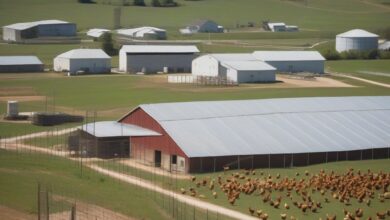Understanding the Risks of a Bird Flu Pandemic Today
Understanding the Risks of a Bird Flu Pandemic Today
The question of whether we should be worried about a bird flu pandemic has entered the public discourse once more. Recent reports have highlighted the increasing frequency of avian influenza outbreaks, which raises concerns about their potential to evolve and infect humans. In this blog post, we will explore the current state of bird flu, the transmission risks associated with it, and the measures that are being taken to mitigate the threat of a pandemic.
What is Bird Flu?
Bird flu, or avian influenza, refers to a variety of influenza viruses that primarily affect birds. While there are different strains of bird flu, the most infamous are the H5 and H7 strains. These viruses can sometimes infect humans, leading to severe illness and, in some cases, death. The risk of human infection is typically linked to close contact with infected birds.
Types of Bird Flu
- Low-pathogenic avian influenza (LPAI): Generally causes mild symptoms in birds and poses little risk to humans.
- High-pathogenic avian influenza (HPAI): Can cause severe diseases in birds and has been responsible for significant outbreaks.
Why Should We Be Concerned?
While bird flu has been contained in the past, the current situation raises several concerns:
- Increased transmission: Recent observations indicate that several bird flu variants are causing outbreaks in wild and domestic birds, amplifying the potential spillover into the human population.
- Mutation risk: The capability of influenza viruses to mutate raises alarms. If a bird flu strain gains the ability to efficiently transmit between humans, it could lead to a serious pandemic situation.
- Pandemic preparedness: Lessons learned from past pandemics, such as H1N1 in 2009 and COVID-19, illustrate the importance of being vigilant and prepared for new infectious threats.
Current Cases and Trends
As of late 2023, several countries have reported significant outbreaks of bird flu. These outbreaks are becoming increasingly common, with considerable media coverage drawing attention to their potential implications. Several factors contribute to this rising trend:
- Environmental changes: Climate change is affecting wildlife ecosystems, potentially providing new avenues for viruses to spread.
- Intensive animal farming: High-density farming operations create fertile conditions for viral transmission.
- Global travel: Human travel can inadvertently spread viruses across international borders, giving rise to new epidemic situations.
Recognizing Transmission Risks
Human infections with bird flu are relatively rare, but certain conditions increase the likelihood of transmission:
- Occupational exposure: Individuals working in poultry farms or handling affected birds are at the highest risk of exposure.
- Live bird markets: These venues can serve as hotspots for virus exchange between different bird species and humans.
- Close contact with infected animals: Interaction with sick or dead birds can lead to zoonotic transmission.
Symptoms of Bird Flu in Humans
In the event of human infection, symptoms can be severe and may include:
- Fever and chills
- Cough and sore throat
- Muscle aches
- Respiratory distress
- Eye infections (conjunctivitis)
Preventive Measures and Responses
Governments and health organizations have implemented various strategies to combat bird flu outbreaks and minimize pandemic risks:
- Surveillance and Monitoring: Continuous tracking of bird populations for influenza strain variants is essential.
- Vaccination: Vaccines for poultry can help reduce virus transmission among birds.
- Public Awareness Campaigns: Educating the public, especially those in contact with birds, is crucial in reducing infection risk.
- Biosecurity measures: Strict biosecurity protocols on farms can help prevent the introduction and spread of viruses.
- Rapid Response Teams: Mobilizing resources to swiftly address outbreaks is vital for preventing further spread.
Research and Development
Research into avian influenza is ongoing, focusing on understanding how these viruses mutate and how they can affect humans. Scientists are working to:
- Develop universal flu vaccines: A long-term goal is a vaccine that works against multiple influenza strains.
- Enhance antiviral medications: Improving the efficacy of existing antiviral drugs can offer better treatment options for infected individuals.
- Model potential outbreaks: Computational models can help predict the spread of avian influenza and assess the effectiveness of interventions.
Conclusion
While the risk of a bird flu pandemic is currently low, vigilance remains essential. As environmental and social factors evolve, so too does the risk posed by avian influenza viruses. Continued monitoring, research, and preventive measures are critical components in safeguarding public health. By staying informed and proactive, we can better prepare ourselves for any potential threats that may arise in the future.
Given the interconnectedness of our world and the lessons learned from recent pandemics, understanding the risks associated with bird flu is not just a matter for scientists but for everyone. Awareness and preparedness can help mitigate the impacts of any future outbreaks.
“`



